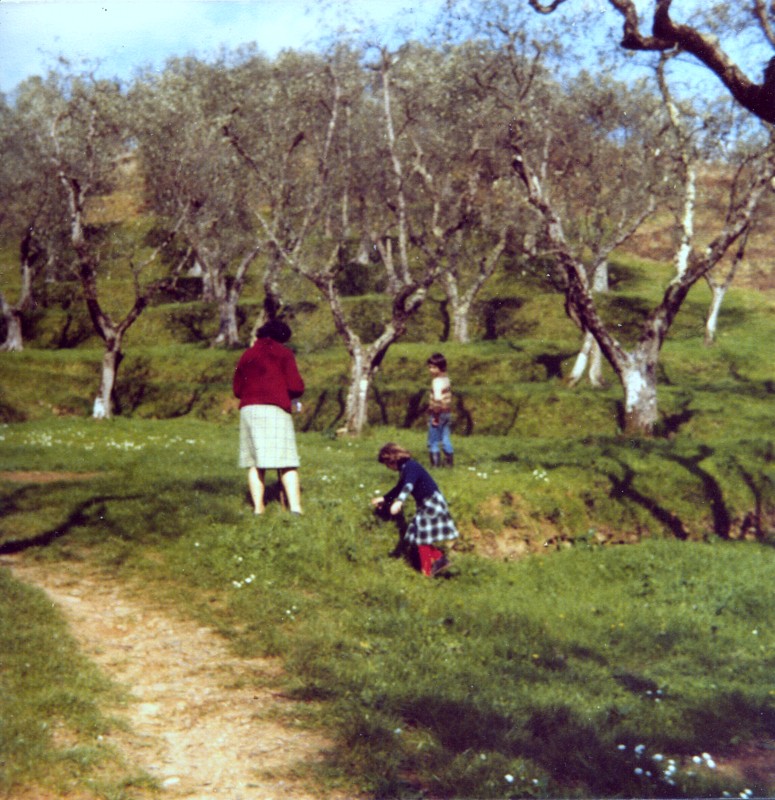Asparagi Posted by Serena on Mar 14, 2012 in Italian Language
Oggi è una bellissima giornata di primavera: il cielo è di un azzurro intenso, il sole comincia a riscaldare la terra e gli animi, le margheritine di campo fanno timidamente capolino assieme alle violette e alle primule fra l’erba ancora bruciata dal freddo inverno.
Today is a beautiful spring day: the sky is a deep blue, the sun is beginning to warm up the soil and our hearts, the daisies are timidly peeping out as are the dog violets and the primroses through the grass which has been burnt by the cold winter.
Con una certa nostalgia mi tornano in mente quelle giornate di marzo quando abitavo a San Lorenzo a Vaccoli, un paese nelle colline fra Lucca e Pisa. Accanto a casa nostra c’era un vecchio uliveto molto ben curato, e lì sulle terrazze piene di margheritine, fra le radici degli ulivi contorti a marzo crescevano gli asparagi selvatici. Gli asparagi selvatici sono molto più sottili di quelli coltivati, raggiungono al massimo lo spessore di una matita, ma il sapore è squisito.
With a touch of nostalgia I remember those days in March when I used to live in San Lorenzo a Vaccoli, a village in the hills between Lucca and Pisa. Next to our house there was an old well cared for olive grove, and there in March, on the terraces full of daisies, the wild asparagus used to grow amongst the roots of the twisted olive trees. The wild asparagus are much thinner than the cultivated ones, growing no thicker than a pencil, but their flavor is fantastic.
Sopra: Mia mamma con mio fratello Francesco ed un’amica raccolgono gli asparagi, fine anni 70
Nel pomeriggio dopo la scuola, mia mamma portava me e mio fratello più piccolo Francesco a raccogliere i turrioni degli asparagi. Ci voleva molto tempo e molta pazienza per raccoglierne una quantità sufficiente per cinque per persone, ma per noi era più che altro una scusa per fare una passeggiata all’aria aperta, e delle volte ci accompagnavano altri bambini del vicinato. Camminavamo su e giù per le terrazze dell’uliveto alla ricerca dei sottili rami piumati delle piantine degli asparagi nascoste fra i sassi e le radici degli alberi. Dopo un paio d’ore, tutti contenti, tornavamo a casa con un mazzolino di fiori di campo e una manciata di asparagi, che mia madre avrebbe usato per fare la frittata.
In the afternoon after school, my mother used to take me and my younger brother Francesco to pick the asparagus shoots. It would take a lot of time and patience to pick enough for five people, but for us it was mainly an excuse to take a stroll out in the fresh air, and sometimes other children from the neighborhood would come with us. We would walk up and down the terraces of the olive grove looking for the thin feathery branches of the little asparagus plants which were hidden amongst the stones and the roots of the trees. After a couple of hours, feeling content, we would go home with a small bunch of meadow flowers, and a handful of asparagus that my mother would use to make a frittata.
Frittata di asparagi (Italian asparagus omelet):
N.B. If you can’t find wild asparagus the cultivated ones are nearly as good.
Rinse the asparagus and cut off the hardest part of the stalk. Put the asparagus upright in boiling water leaving the tops protruding, cook them for a few minutes until just tender, then drain them. When they have cooled down a little, chop the asparagus into pieces 2 to 3 centimetres long (about an inch). In a large bowl beat some eggs to make an omelet and add a pinch of salt and the chopped asparagus, then mix well.
Heat a little olive oil in a non stick frying pan, and when very hot pour in the egg mixture. When the bottom is a nice golden color, turn the frittata upside down with the help of large lid or plate (make sure you do this above the kitchen sink to avoid nasty accidents!), and then cook it on the other side. Your frittata di asparagi can be eaten hot or cold.

Build vocabulary, practice pronunciation, and more with Transparent Language Online. Available anytime, anywhere, on any device.





Comments:
Moody:
Ciao Serena, come stai ? spero che tu stia bene.. did i wrote that good ? i learned that from you on the Congiuntivo posts =) Okay, its been a while since i’m learning Italian and i think i’m doing okay, i’ve already took B1 in CILS.. and preparing for B2 in june.. your blog added so much to me and enriched me with a great knowledge.. there is only 1 thing..i just cant find the Categories, only recent post, and popular ones.. i think if the categories can be added at the left of the blog can help so much to get the old posts as i wanna read them all.. so thats it, other than that.. your blog is VERAMENTE PERFETTO =)! ok thanks for your time and your help.. you’re the best!!
Moody
Serena:
@Moody Ciao Moody, perfetto il tuo uso del congiuntivo! You’re not the first person to mention the lack of categories on my blog page. I don’t have much to do with that side of things so I’ve sent an e-mail to my manager asking if it can be fixed.
Saluti da Serena
Allan Mahnke:
MMMM Ma anche risotto!!!
Allan
Lisa DeNunzio:
Si, I would also like to see the verb categories listed on the side bar. Right now I would like to look up ‘congiuntivo’ and refresh my memory…..
Best, Lisa
Paul ceglia:
Grazie per la deliziosa storia di raccogliere gli asparagi nelle campagne italiane. Sono in grado di gustare il sapore della frittata aspragus selvaggio.
Paolo